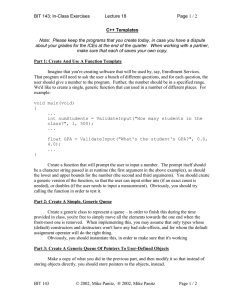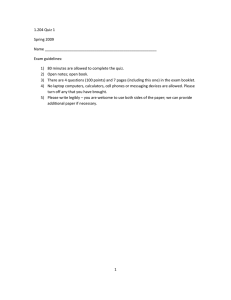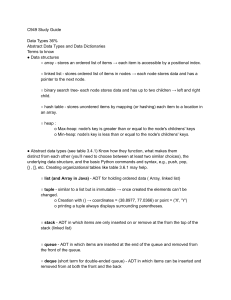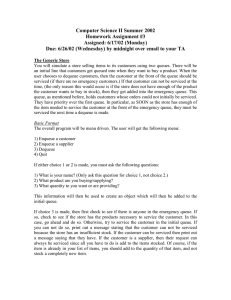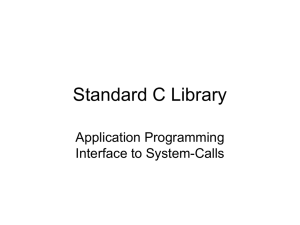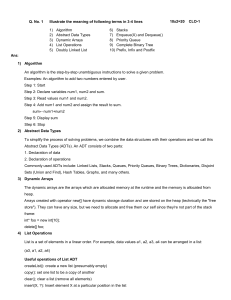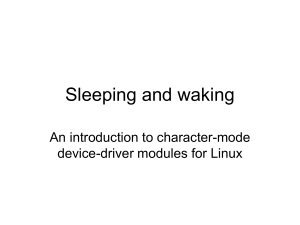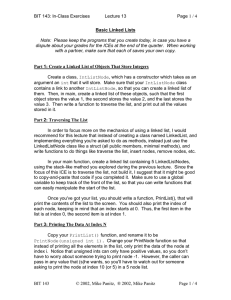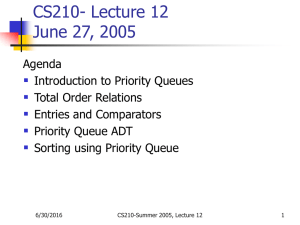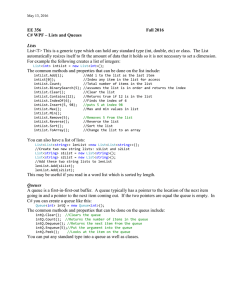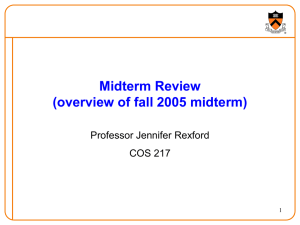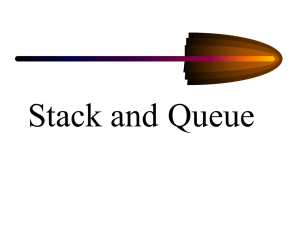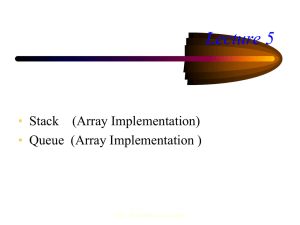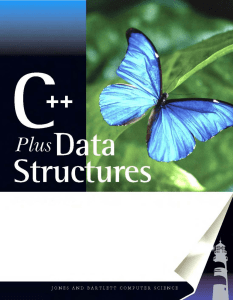Data Structures and Fundamentals of Programming Problem #1
advertisement
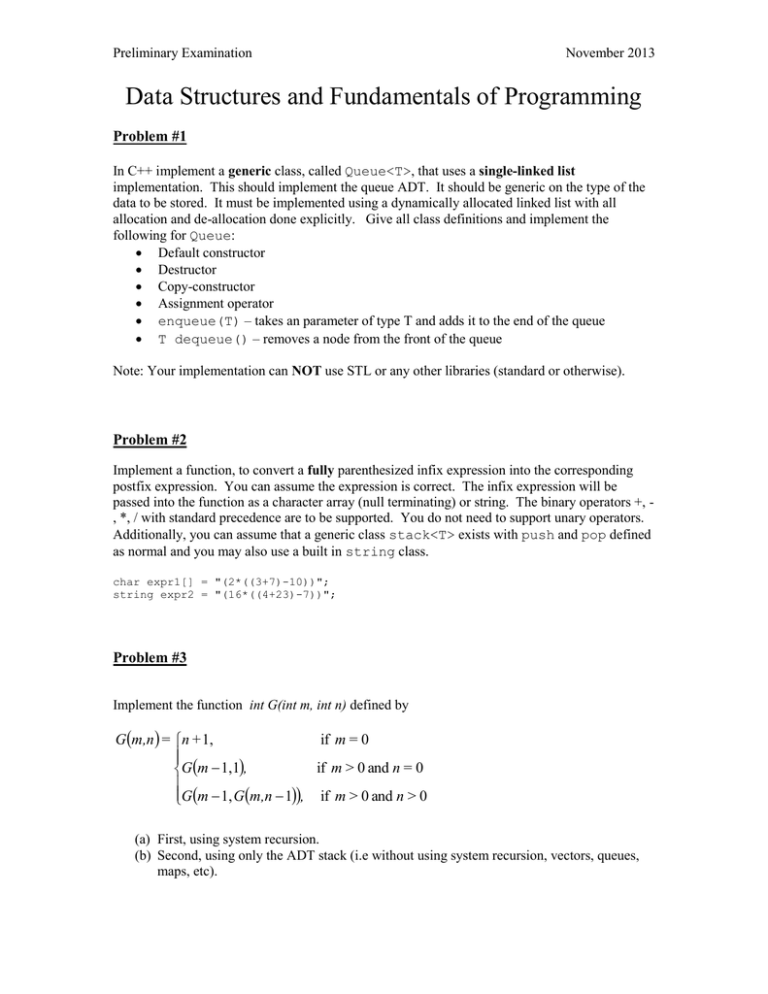
Preliminary Examination
November 2013
Data Structures and Fundamentals of Programming
Problem #1
In C++ implement a generic class, called Queue<T>, that uses a single-linked list
implementation. This should implement the queue ADT. It should be generic on the type of the
data to be stored. It must be implemented using a dynamically allocated linked list with all
allocation and de-allocation done explicitly. Give all class definitions and implement the
following for Queue:
Default constructor
Destructor
Copy-constructor
Assignment operator
enqueue(T) – takes an parameter of type T and adds it to the end of the queue
T dequeue() – removes a node from the front of the queue
Note: Your implementation can NOT use STL or any other libraries (standard or otherwise).
Problem #2
Implement a function, to convert a fully parenthesized infix expression into the corresponding
postfix expression. You can assume the expression is correct. The infix expression will be
passed into the function as a character array (null terminating) or string. The binary operators +, , *, / with standard precedence are to be supported. You do not need to support unary operators.
Additionally, you can assume that a generic class stack<T> exists with push and pop defined
as normal and you may also use a built in string class.
char expr1[] = "(2*((3+7)-10))";
string expr2 = "(16*((4+23)-7))";
Problem #3
Implement the function int G(int m, int n) defined by
G m,n = n + 1,
if m = 0
if m > 0 and n = 0
G m 1,1,
G m 1, G m,n 1, if m > 0 and n > 0
(a) First, using system recursion.
(b) Second, using only the ADT stack (i.e without using system recursion, vectors, queues,
maps, etc).
Preliminary Examination
November 2013
Problem #4
Given the following:
struct cellT {
int val;
cellT *next;
};
bool contains(cellT *list, cellT *sub);
Write a function that given two linked lists will determine whether the second list is a
subsequence of the first. To be a subsequence, every value of the second must appear within the
first list and in the same order, but there may be additional values interspersed in the first list. A
list contains itself; the NULL list is contained in any list.
Here are some examples:
list
sub
Contains(list, sub)
14 2 9
14
true
1429
94
false
1429
19
true
1429
114
false
1429
2 9 10
false


